Smithsonian

Gene-edited bacon could be on your breakfast menu as early as next year
A company in the United Kingdom is editing the genes of pigs used for commercial pork production to make them ...
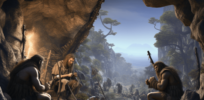
Human evolution roundup: Here are last year’s 13 most fascinating findings on human ancestry
Smithsonian paleoanthropologists reveal thirteen of the year’s most fascinating findings about human origins ...
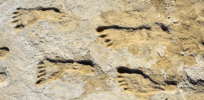
When was North America colonized by prehistoric humans? These New Mexico fossils upend the timeline
Fossilized ancient footprints found at White Sands National Park humanize them, revealing the actions of their lives in ways that ...

Video: Communication of the future? Brain implant allows paralyzed woman to speak through an AI avatar
After Ann Johnson suffered a stroke 18 years ago, she became paralyzed and lost the ability to speak. Now, with ...

Cold snap: How plummeting temperatures a million years ago almost killed off Europe’s earliest humans
A period of extreme cooling in western Europe may have driven away the continent’s earliest human species, researchers say ...

‘It ages the brain by a decade’: Long COVID symptoms including extreme fatigue and brain fog take severe health toll
Scientists tested the cognitive function of more than 3,000 participants and found those with longer-lasting Covid symptoms had the strongest ...
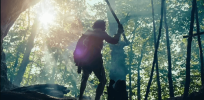
How searching for food in trees drove ancient human ancestors to evolve to walk upright
When human ancestors evolved to walk upright, they may have done so in trees, suggests new research published [11 January ...
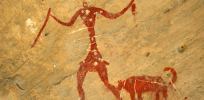
Evolution research: What were the top discoveries of 2022?
Telling us more about our food, our health, our close relatives and ancestors, and even our animal friends, these 14 ...

‘Unseen connections’: Iconic 3-million-year-old hominim Lucy marks 48th anniversary with a selfie
The iconic ancient hominin gets her hands on a smartphone in anticipation of the museum’s upcoming exhibition exploring the global ...
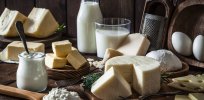
Lactose tolerance: Early humans couldn’t easily process milk and cheese. How, why and when did that change?
Just 5,000 years ago, even though it was a part of their diet, virtually no adult humans could properly digest ...

Evolution of lactose tolerance: How humans (recently) became able to digest milk, cheese and other dairy products
In a study published [July 27] in Nature, researchers compared archaeological evidence for 9,000 years of European milk use with genetics, and found ...

Mmmm, kelp burgers! Would you swap meat for seaweed?
Consider, if you will, the possibility that we left our most promising resource behind in the ocean. Will you swap ...
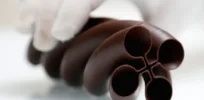
Edible metamaterials: The world’s most ‘perfect chocolate’ was 3-D printed
Think about biting into a piece of chocolate. What makes it enjoyable? Is it the sweetness? The way it melts ...

Is vanilla hard-wired to be our favorite scent?
From a list of ten unique scents, survey respondents from a variety of cultural backgrounds all ranked vanilla the most ...

Rare bird phalluses: Stories of sexual variation in nature
Ninety-seven percent of all bird species have no phallus. Those that did, including ostriches, emus and kiwis, sported organs quite ...

Winners and losers in plant evolution: How humans are driving hundreds of species to extinction
A new analysis spanning more than 86,000 plant species from John Kress, botany curator emeritus at the Smithsonian’s National Museum of ...

‘Venice of the stone age’: Why this ancient Chinese city was abandoned
Some 4,000 years ago, a sophisticated society that built a city of canals known as “China’s Venice of the Stone ...
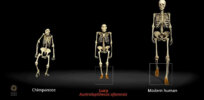
Mystery of 3.7 million year old footsteps solved
In the 1970s, a set of 3.66-million-year-old human footprints preserved in volcanic ash turned the paleontology field upside down. They ...

How new advances in archaeology are illuminating mysteries of the Hebrew Bible
Far from any city, ancient or modern, Timna is illuminating the time of the Hebrew Bible—and showing just how much ...
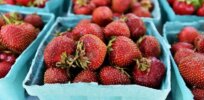
Over a third of strawberries harvested are discarded due to their short shelf life. Here’s how CRISPR could help them last longer
More than a third of all fresh strawberries that consumers buy end up getting tossed out because they're bruised, moldy ...
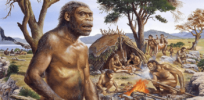
Excavations in Israel have sparked renewed debate over why Homo erectus migrated out of Africa
What exactly pushed—or pulled—H. erectus out of Africa is a matter of fierce debate. Was it some innate adaptability, such ...
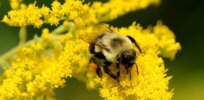
American bumblebee has declined in numbers by more than 90% in 8 states across the northern US
American bumblebees are a vital pollinator for wildflowers and crops, and their decline could have severe consequences for the environment ...

Who needs a COVID vaccine booster shot, and when?
On August 12, the FDA announced that third doses of Pfizer and Moderna’s vaccines would be made available for patients ...

Climate warming could increase land available to grow crops — but also boost the spread of plant diseases
The agricultural impact of climate change would be a little more straightforward, if it occurred in a world where crops ...
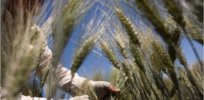
A human protein genetically engineered into wheat plants increases yields by 50%. Is this dramatic tweak replicable?
It’s not enough to grow more food—humanity needs to grow more efficiently. With an eye toward feeding the world’s growing ...
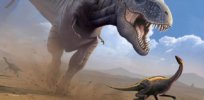
‘A tyrannical clawhold’ on their world: How Tyrannosaurus Rex dominated the prehistoric ecosystem
The sheer size and apparent ferocity of T. rex has been apparent from the outset, but, paleontologists have learned, this ...
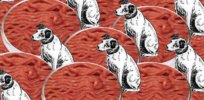
‘If cats and dogs made up their own country, they would rank fifth in meat consumption.’ Cell-based meat poised to cut pet food industry’s carbon footprint
If cats and dogs made up their own country, they would rank fifth in terms of meat consumption, according to ...

‘Hello World!’ Bacterial DNA combines CRISPR and electricity to store data. Here’s what that means
A study published on January 11 in the journal Nature Chemical Biology details how the researchers led by Columbia University ...

